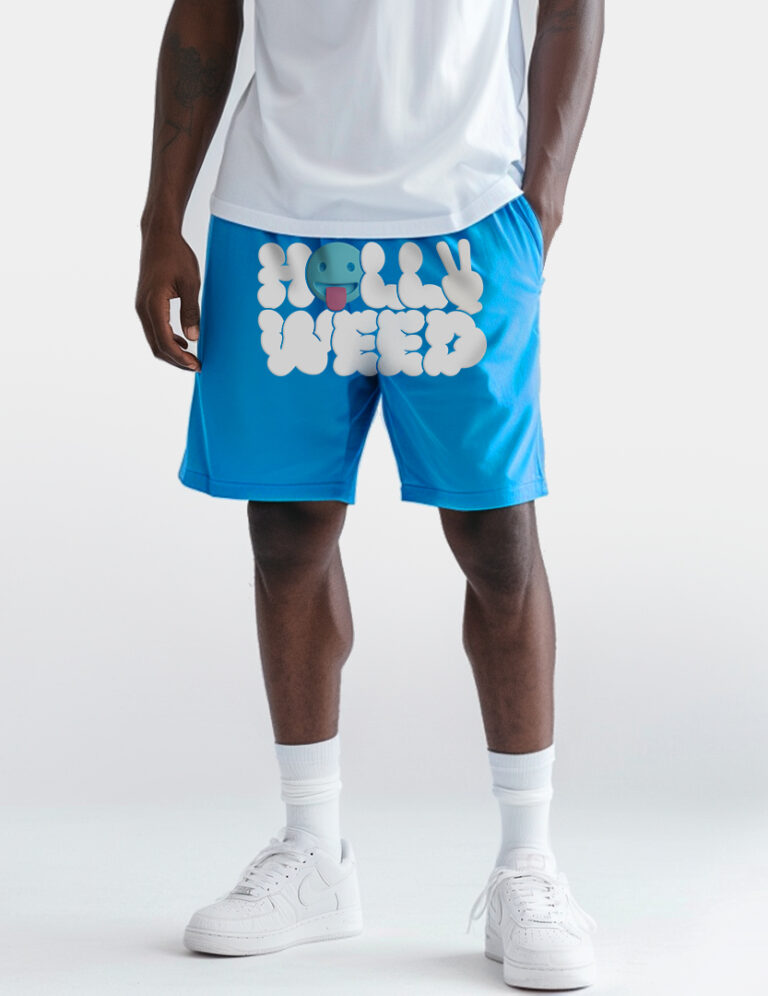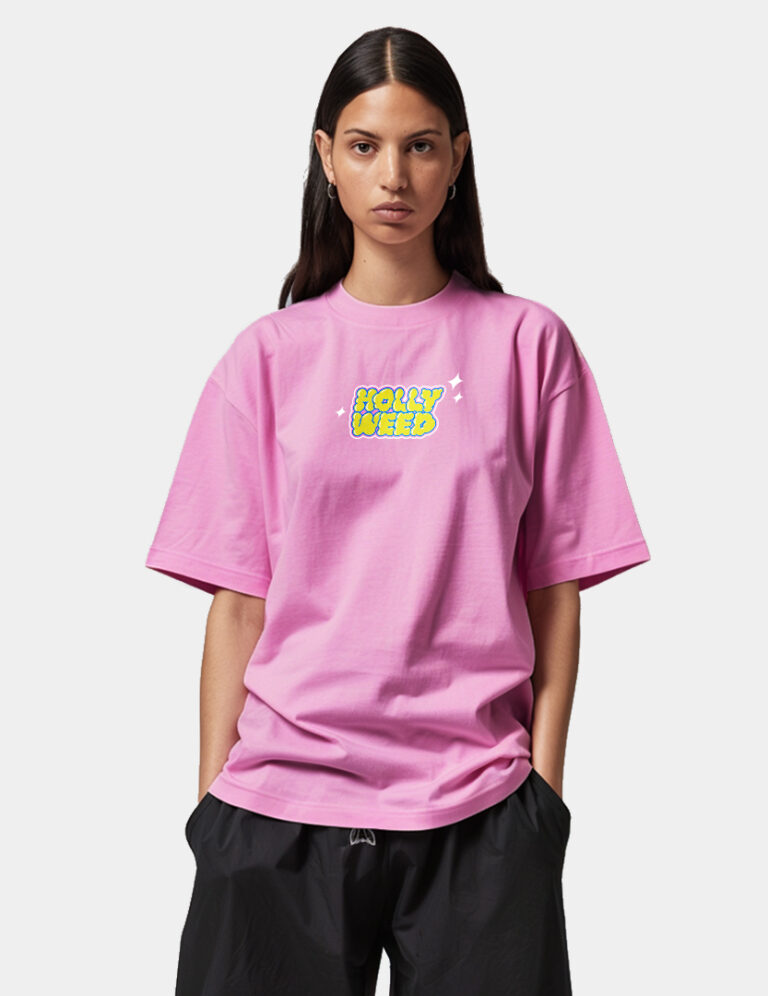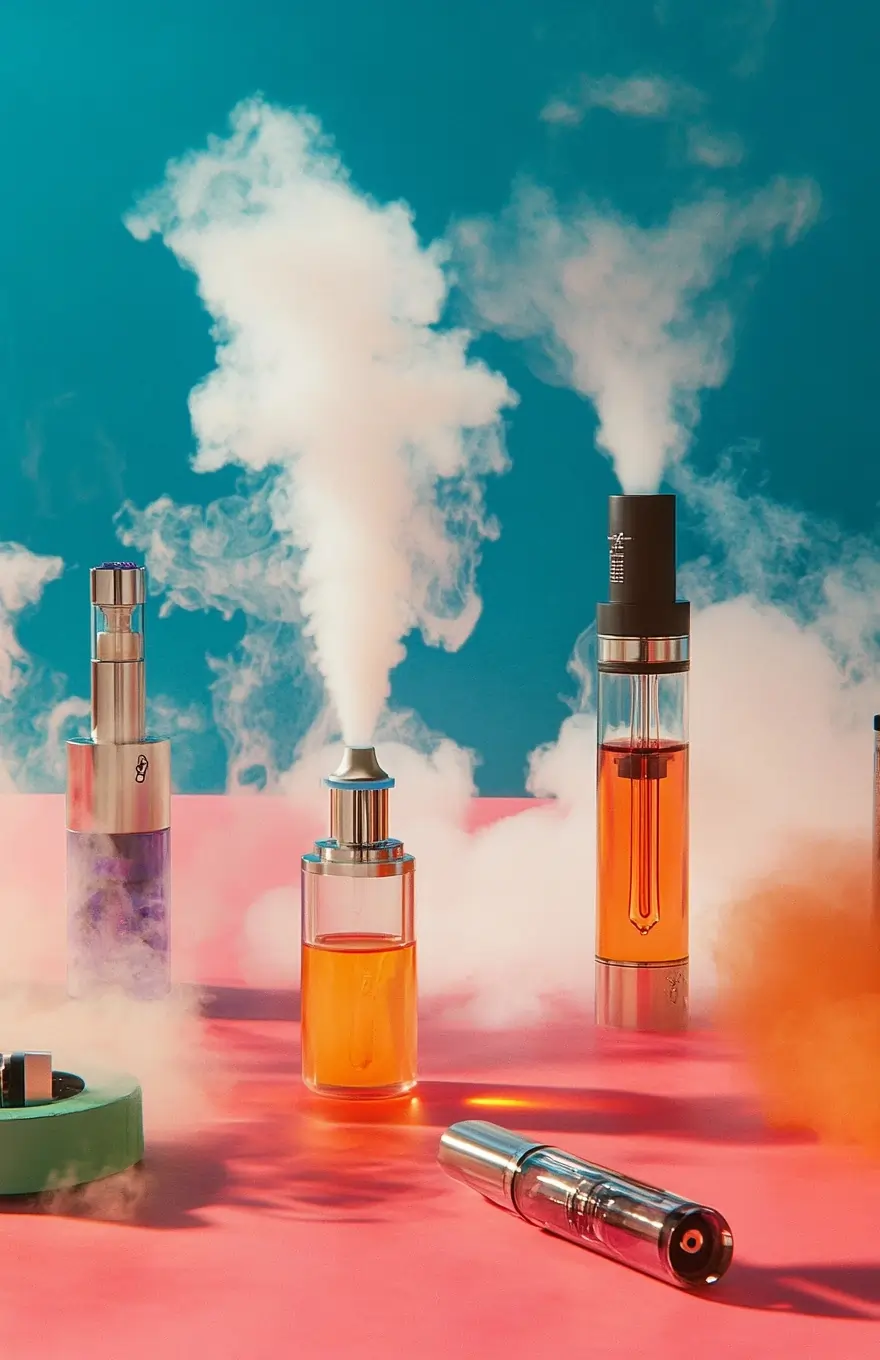
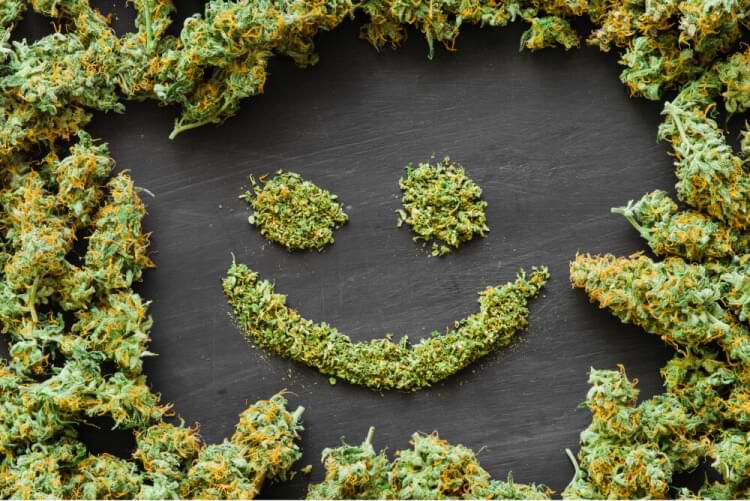
From the dreadlocks and open-toed shoes of legendary pot smoker Bob Marley to the free-spirited, tattoo-covered comedian Pete Davidson, the stoner aesthetic and the clothes that define it are in constant evolution. But what is the “stoner look” to you? There are countless atypical archetypes used to define what a “stoner” is. Still, as cannabis nears legalization nationwide and the plant becomes less taboo, it is more challenging to pick the stoner out of a crowd.
On the surface, it may seem that little connects the styles and personas of stoners throughout the ages. So it’s high time we dive into the stoner aesthetic, namely the fashion world and tradition that crafted it, and follow the threads from past to present. The fact that the “stoner look” no longer stands out doesn’t mean the clothes of cannabis culture are fading away—they’re just becoming more mainstream.
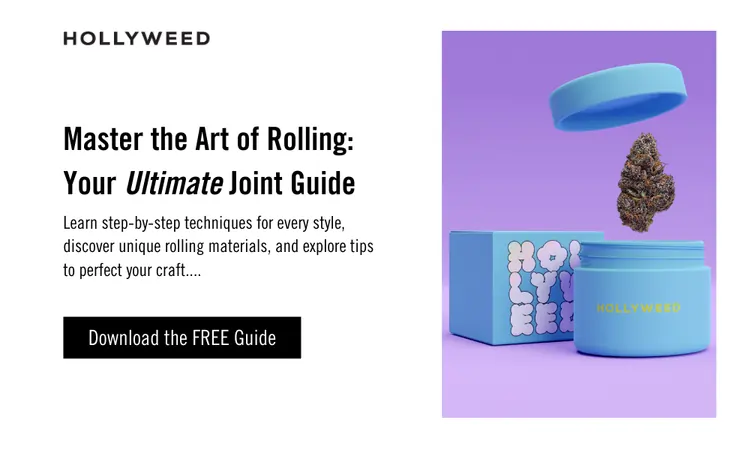
The stoner aesthetic is as unique and varied as the people who identify with it. There are many possible explanations for its increased popularity over the years. The appeal may lie in its ability to provide a sense of escapism for some. For others, it could be celebrating freedom and positivity in an often-stressful world. And for most, it’s a mix of both ideals.
The term “stoner” often has negative connotations attached to it. You search stoner, and you typically won’t see the beauty, perfection, and success that most people aspire to be. However, the stoner aesthetic is about more than smoking weed, snacking, and giggling with your friends—it’s also a powerful and creative artistic movement to be reckoned with. From the clothing to the decor, fashion has always been at the forefront of weed culture.
Whether you’re a veteran of smoke culture or simply curious about this unique style, there’s something for everyone in the world of cannabis. The underlying philosophy most cannabis consumers celebrate is the sense of freedom and relief things like CBD products can provide.

While its widespread acclaim and infamy came later, stoner culture in America started during the colonial era. At that time, hemp was a critical crop, so colonial governments in Virginia and Massachusetts required land-owning farmers to grow cannabis for certain products like textiles and fabrics.
Over time, the consumption of cannabis found its way into the arts and sciences, with several prominent figures shouting their support of the reefer. The love of hemp products spread from the colonies to other parts of the country.
In the 1960s, cannabis consumption became the trophy product that pushed counter culture. Everyone from The Beatles to Carl Sagan indulged in the “devil’s lettuce.” Then in 1971, a group of high school students at San Rafael High School began gathering at 4:20 P.M. at a French Chemist Louis Pasteur statue to buy and sell cannabis. Today, stoner culture has influenced everything, including music, fashion, and language.
Below we’ll get into the attitude toward cannabis industry throughout the decades, notable consumers of the era—everyone from Marilyn Monroe to Tommy Chong—and the fashion that embodied the ideal stoner. In doing so, one can see how the perception of cannabis as a “life-threatening schedule 1 drug” has changed, and how the typical stoner is less recognizable today than ever before.
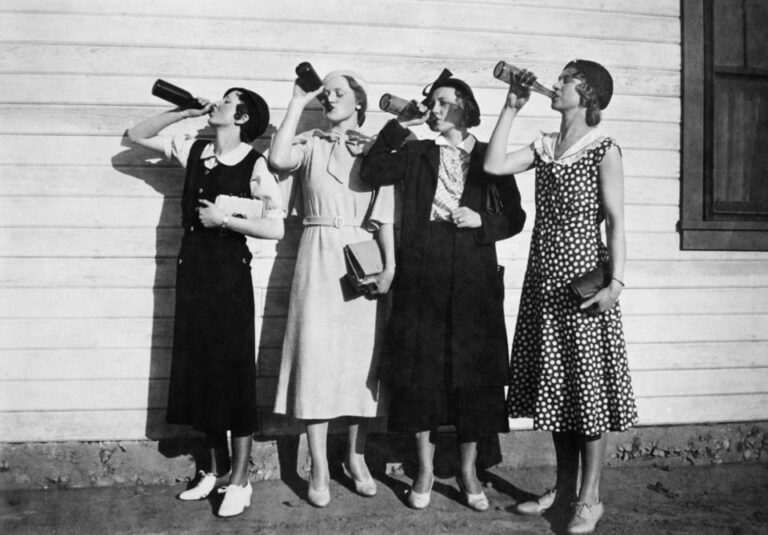
New in Cannabis: Delta 8 pre-rolls (or “joints”) were the most popular way to enjoy flower back then.
Most pre-1900 references to cannabis relate either to its medical usage or its role as an industrial textile. But in the 1910s, 20s, and 30s, you begin to see hemp’s recreational consumption entwined in several artistic movements.
Cannabis and its widespread utility became popular in America during the 1920s and 1930s, primarily among immigrants of color who settled in enclaves like New Orleans and people fleeing the Mexican Revolution. Cannabis sellers often wore distinctive clothing or had a specific site where they sold the plant.
In the 1930s, cannabis consumption was widespread among jazz musicians and other entertainment industry members. This was partly due to the availability of cannabis and its ability to help performers deal with long hours and weariness from travel and performing.
Today, we celebrate these early proponents of cannabis culture as pioneers who helped pave the way for future generations of artists and entertainers to freely use this plant. Thanks for everything, reefer men and women of the 1930s!
Ever wonder what someone who smoked weed in the 30s would wear? Us too! Since the “stoner” hadn’t been defined, and the term didn’t gain widespread usage until much later (the 1970s), the everyday wardrobe of a pot smoker was your common jazz artist and attendee.

New in Cannabis: As cannabis became more stigmatized, it became more popular! The most common form of the flower went from joints to cigarettes.
The 1940s and 50s were pivotal in American and world history. WWII and the birth of the Golden Age of Hollywood shaped America as a freedom fighter for peace and a wonderland where glitz and glamor are at your fingertips.
The 1937 release of the film Reefer Madness fueled a fear-mongering effort against cannabis. Politicians, doctors, and other authority figures claim the plant is dangerous in the film. Reefer Madness sparked a peak in hysteria against the plant and the folks who indulged in it. Warning signs of the supposed dangers of reefer addiction were everywhere – on billboards, posters, and leaflets distributed by concerned organizations like the DEA and FDA. Despite these efforts to dissuade people from smoking cannabis, it seemed destined to become increasingly prevalent in mainstream culture.
Many people continued to partake in the “devil’s lettuce”—either out of curiosity or simply because they enjoyed its effects.
In the 1940s and ’50s, marijuana was a common roadside plant smoked or eaten by the poor when they couldn’t get tobacco. There was no particular culture associated with it. While higher-profile people enjoyed cannabis, it was often an afterthought to tobacco, which grew in popularity thanks to Hollywood’s allurement with smoking culture.

New in Cannabis: The Haze strain was first developed. Enjoy a piece of 70s nostalgia with our Hawaiian Haze.
This period is called by many the Wild West of cannabis culture. People experimented with all kinds of consumption methods, both medicinal and recreational. They smoked all parts of the plant: stems, seeds, leaves, and buds. While the amount of bud people indulged in and the potency of the leaf weren’t quite the same as it is today, this era in cannabis culture was pretty special. This is thanks largely to the hippie lifestyle, which gave legitimacy to the mainstream medicinal plant we have today.
The term “stoner” actually comes from the word “stone,” which was slang for cannabis in the 1960s. High school students in Northern California gathered after school at the statue of Louis Pasteur to smoke and share knowledge about cannabis. They became known as “stoners.”
Around this time, music became strongly tied to cannabis as well. Rock N’ Roll and its connection to the explosion of psychedelic-based artistry paved the way for the stoner aesthetic. In this Wild West era, we see the “stoner” take form and grow into something more easily identifiable.
The fashion of this era and the next couple of decades have been recreated dozens of times by a broad base of fans everywhere.
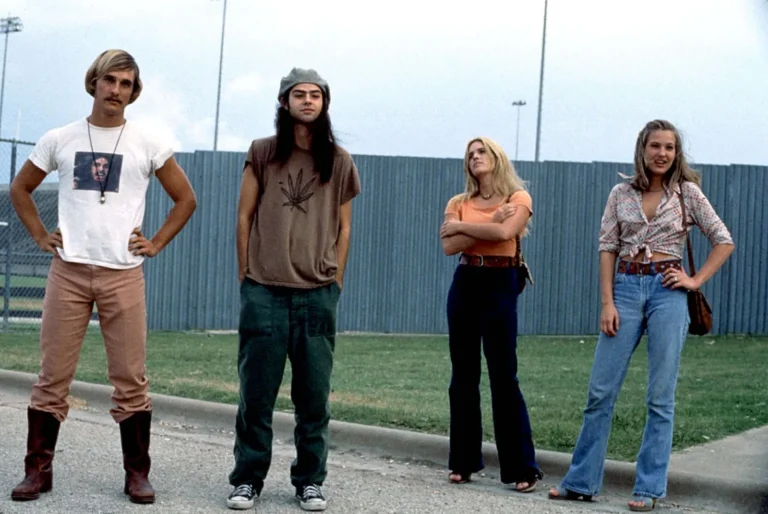
New in Cannabis: The legendary strain OG Kush was created in the early 1990s.
The 1980s proved to be a lackluster decade for cannabis-infused cinema and television as the War on Drugs became a prominent political issue. Despite this shift in tone, some films and TV shows still managed to find humor in cannabis culture. These included movies like Fast Times at Ridgemont High, which focused on the comedic aspects of drug use rather than the negative consequences. This sign of changing attitudes toward hemp suggests that it was destined to become more socially acceptable. Whether people loved or hated pot during this period, one thing is clear: its role in popular culture was far from over.
During the 1990s, cannabis consumption once again became a prominent part of American culture as people embraced it both in their homes and in public spaces. Films like Dazed and Confused and Half Baked cemented stoner comedy as a crowd-pleasing genre. At the same time, musicians like Snoop Dogg and Cypress Hill brought cannabis further into the mainstream, with songs celebrating its many benefits. Overall, the 1990s represented a significant turning point for cannabis culture, paving the way for even greater acceptance in subsequent years.
For both men’s and women’s stoner attire of the 1980s, everything from the 60s and 70s still applies, just more t-shirts, tie-dye, and disco. Meanwhile, 90s fashion provided a fresh new take on the stoner look, blending the best parts of the 80s (the colors and the casualness) with the darker, grunge vibe popularized by bands like Nirvana. The dichotomy between these looming eras is large, and the attire listed below is more relevant to 90s stoner fashion than the 80s.
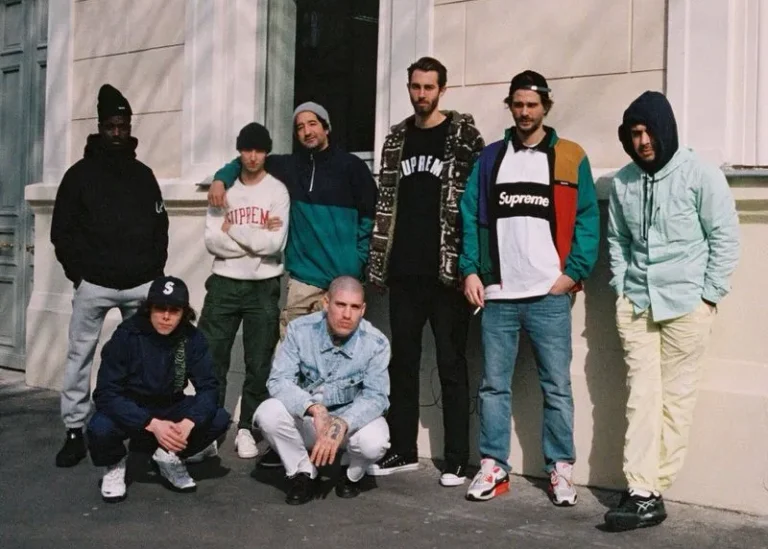
New in Cannabis: Hon Lik invents the first vape pen to help himself quit smoking cigarettes.
The 2000s heralded a new era for cannabis culture as people embraced it as a legitimate hobby and pastime rather than just a recreational drug. Gone were the days of simply choosing between “schwag” or “high-grade,” with consumers now seeking out distinctive strains and varieties of cannabis. Whether you were a casual consumer or an avid connoisseur, the 2000s were a time of growth and exploration for cannabis enthusiasts everywhere.
The 2000s were a pivotal time for cannabis. For the first time in recent history, people were beginning to see the plant as something more than just a recreational drug. In 1996, California became the first state to legalize cannabis for medical use, and from there, other states began to follow suit. By the early 2000s, 13 states had passed laws making medical cannabis legal. This was a huge step forward in legitimizing the plant and its many benefits.
The 2010s were a decade of change for cannabis culture. With the rise of transformational festivals, people began to view cannabis as more than just a drug—it became a tool for self-exploration and personal growth. For many people, smoking cannabis was a way to connect with nature and their spirituality.
The early 2000s prompted a fresh take on the stoner aesthetic: grunge. Long hair, baggy jeans, thick shoes with elongated gums, tight shirts, and spikey frosted tips defined what was fashion-forward at the time. In my opinion, the early 2000s carry the most cringe on this list. But when it came to fashion in the 2010s, “crazy” looks became far less noteworthy, with people like Lady Gaga wearing a meat dress.
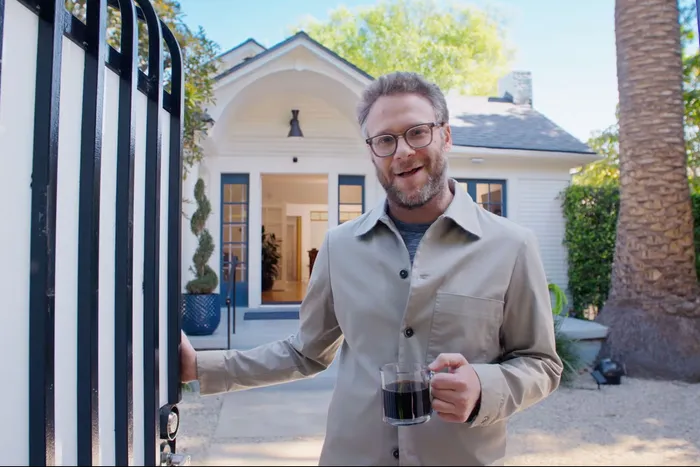
New in Cannabis: Today, edibles and disposable vapes are all the rage.
In the present day, cannabis culture is as ubiquitous as ever. Most people agree that it has countless potential utilities. Almost all across the nation, cannabis is legal, and business is booming. These days, it’s tougher to find someone who doesn’t enjoy cannabis now and then.
Fashion today is a blend of these trends, emphasizing comfort, color coordination, and overall functionality.
It’s safe to say cannabis is here to stay, and its connection to pop culture is as relevant as ever. As we’ve seen, the stoner aesthetic is always evolving. No longer relegated to the dark corners of alleyways and corny skate shops, it is making its way into the mainstream.
The world may have changed in the last 100 years, but cannabis and its acception in society has, too. Today’s hemp leaf is often more potent, experience specific, and more available than it was for the first stoners all those years ago. The “stoner aesthetic” is not only alive and well; it’s the best it’s ever been. Shop Hollyweed Apparel

